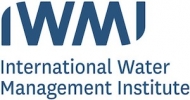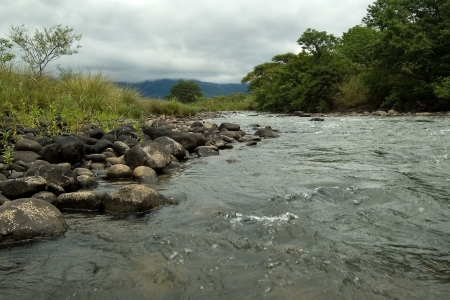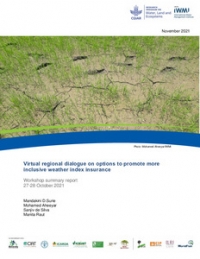The Ganges basin has abundance of surface water and groundwater resources. Yet, inadequate access to water is a major impediment for sustainable intensification and productivity increases in agriculture in the basin. Hydrology of the basin is highly seasonal, and most of monsoon-generated surface flow is unused, while water stresses during non-rainy period are mounting. Topography, demographic pressures and environmental concerns limit prospects for surface storage in the Basin – to buffer this water variability to improve supply: it is estimated that it may be possible to store only about 15% of the huge annual runoff - in surface storages. Therefore, creating additional sub-surface storage (SSS) may be seen as one alternative solution for storage in densely populated and poverty rampant Basin. SSS provides many eco-systems services (ESS) and benefits. It buffers water variability and provides water that may be used to sustainably intensify and improve productivity in agriculture, domestic and industrial sectors. At the same time, SSS eliminates numerous social and environmental cost associated with large surface storage development. In addition, the regulating ecosystem service of SSS can help alleviate impacts of floods and droughts, including on women and children that are the hardest hit by such water extremes. The scale at which pumping and recharge interventions (number and locations) require in the basin to mitigate floods and droughts, and to address the perceived threat to river flows due to increased pumping need special care. A detail groundwater and surface water modelling shall show how and where to increase pumping gradually to alleviate these crucial ESS related questions. The concepts of “Ganges Water Machine” coined 40 years ago and “Distributed Pumping and Recharge” can increase the capacity of SSS, by additional pumping of groundwater – out of the aquifers - before the monsoon. This “preparatory” pumping can provide additional water for agriculture for Rabi (winter, Oct-Apr) and summer (Mar-Jun) season crops, and for other sectors. Subsequent recharge through monsoon runoff should replenish the aquifers, thus ensuring sustainability of the enhanced benefits. The concept is therefore about “accelerating” natural groundwater- surface water interactions, to capture some of additional monsoon waters underground, by enhancing groundwater use; pumping-irrigation-recharge-pumping is the proposed accelerated cycle, and the associated ecosystem services that are enhanced are productivity and flood control. Over the last 4 decades the Ganges Water Machine was partially operational. The distributed groundwater pumping with surface water development and few recharge interventions were operational in many regions. However, the groundwater recharge and the resilience of the groundwater system, and sustainability of the benefits, and flood mitigating aspects were not given due consideration. Given the limiting potential of surface water storage, increasing water demand of different sectors and deteriorating conditions of the river flows, this partial operation of the machine needs change. For resilient ecosystems services and sustainable benefits, the full machine of appropriate level of "pump-recharge-pump" has to be in place. The full concept will benefit most areas in the basin, where irrigation intensity at present is as low as 125-130%, through intensification of irrigation in Rabi and Summer periods. The challenge is to understand how to pump groundwater without any negative impacts on the riverine environment and water quality and how to recharge with monsoon floods. Given the increasing water scarcity in the Basin in non-monsoon months, the SSS can contribute also to environmental flows, if captured monsoon runoff underground is then gradually released into rivers and streams during post-monsoon time. The project conducts a rigorous techno-socio-economic feasibility study and provides a technical plan for selected Ramganga sub-basin of the Ganges. The ex-ante techno-socio-economic feasibility report would be a valuable output to facilitate the dialogue with policy makers for piloting and upscaling such interventions in the Ganges. The high-level dialogues, and policy briefs to increase knowledge, change attitude and influence policy and operational activities of the major organizations such as Central Groundwater Board (CGWB) and National Mission for Clean Ganga (NMCG). It also aims to influence rural development programs like CSIR-800 - of the Council of Scientific and Industrial Research – by providing rural development technologies (i.e. SSS enhancement) to some 800 million poor people through established “technology villages”. The GAMES and the WLE funded "UTFI" project complements each other through modeling activities. But they are different in concept and approach in many angles. The UTFI try to capture extreme floods in the existing underground storage by recharging through diversions to existing or additional surface storage's. The GAMES try to create additional SSS to capture recurrent floods by accelerating surface water groundwater interactions. While large scale implementation of UTFI may require land acquisition and cost and benefit sharing mechanisms between upstream and downstream users in the basin, the GAMES has no such issues to tackle.
menu





/index.jpg?itok=EzuBHOXY&c=feafd7f5ab7d60c363652d23929d0aee)









